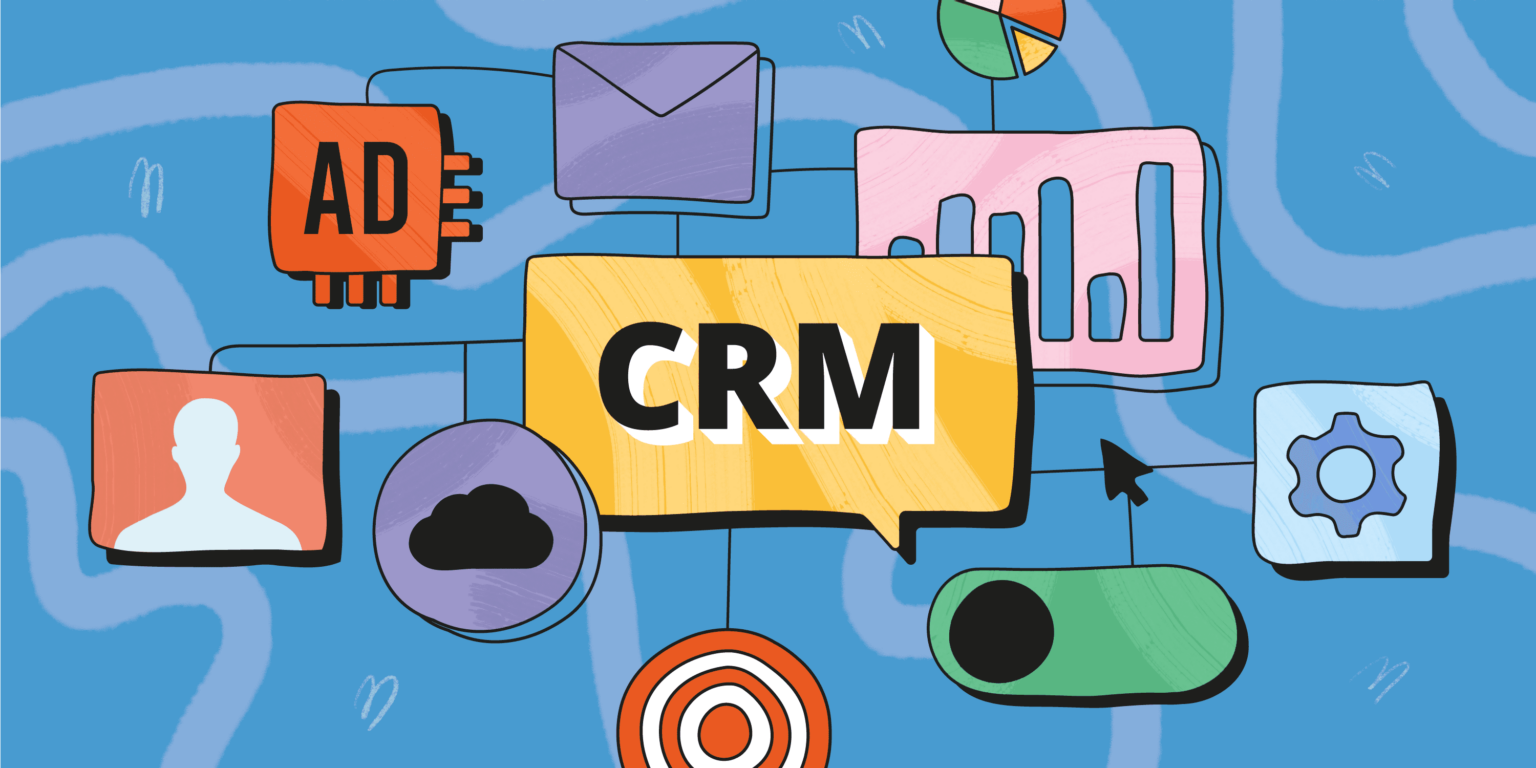Boost Your Small Business: Essential CRM Tips for Growth and Success

Boost Your Small Business: Essential CRM Tips for Growth and Success
Running a small business is an adventure, isn’t it? One day you’re juggling finances, the next you’re wearing the marketing hat, and the day after that you’re the customer service guru. It’s a whirlwind, and in the midst of all this chaos, keeping track of everything – especially your customers – can feel like herding cats. That’s where a Customer Relationship Management (CRM) system comes in. It’s not just about keeping track of customer details; it’s about building relationships, understanding their needs, and ultimately, driving your business forward. This article will dive deep into the world of CRM, offering actionable tips tailored specifically for small businesses, helping you navigate the complexities and reap the rewards of a well-implemented CRM strategy.
What is CRM and Why Does Your Small Business Need It?
Let’s start with the basics. CRM stands for Customer Relationship Management. At its core, a CRM is a system that helps you manage all your interactions with current and potential customers. It’s a central hub where you can store customer data, track interactions, automate tasks, and analyze data to gain valuable insights. Think of it as your business’s memory, helping you remember every conversation, every preference, and every interaction.
Why is this so important for a small business? Well, in the competitive landscape of today, customer relationships are more crucial than ever. Here’s why a CRM is a must-have:
- Improved Customer Relationships: A CRM allows you to personalize your interactions, making your customers feel valued.
- Increased Sales: By understanding your customers’ needs, you can tailor your sales efforts and close more deals.
- Enhanced Efficiency: Automate repetitive tasks and free up your time to focus on more important activities.
- Better Data Analysis: Gain insights into customer behavior, sales trends, and marketing effectiveness.
- Streamlined Communication: Keep all communication in one place, ensuring everyone on your team is on the same page.
Choosing the Right CRM for Your Small Business
The CRM market is vast, with options ranging from simple, free tools to complex, enterprise-level systems. Choosing the right one can feel overwhelming. Here’s a breakdown of factors to consider:
1. Assess Your Needs
Before you start shopping, take a hard look at your business. What are your primary goals? What are your pain points? Do you need help with sales, marketing, customer service, or all of the above? Identifying your needs will help you narrow down your options and find a CRM that aligns with your objectives. Consider these questions:
- What are your biggest challenges in managing customer data?
- What tasks do you want to automate?
- What reports and insights are most important to you?
- How many users will need access to the CRM?
2. Consider Your Budget
CRM systems vary widely in price. Some offer free plans with limited features, while others charge monthly fees based on the number of users or features. Determine your budget and look for a CRM that fits within your financial constraints. Don’t be afraid to start with a free plan and upgrade as your business grows and your needs evolve.
3. Ease of Use
A CRM is only valuable if your team actually uses it. Look for a system with a user-friendly interface and intuitive design. The easier it is to learn and navigate, the more likely your team will adopt it. Consider these factors:
- User Interface: Is it clean and easy to understand?
- Training: Does the vendor offer training and support?
- Integration: Does it integrate with your existing tools (e.g., email, calendar, accounting software)?
4. Scalability
Choose a CRM that can grow with your business. As your customer base expands and your needs become more complex, you’ll want a system that can handle the increased workload. Look for a CRM that offers:
- Scalable storage: Can it handle a growing database of contacts and interactions?
- Advanced features: Does it offer more advanced features as your business grows?
- Integration capabilities: Can it integrate with new tools as your business evolves?
5. Key Features to Look For
While every business has unique needs, certain features are essential for most small businesses:
- Contact Management: Store and organize customer information, including contact details, interactions, and purchase history.
- Sales Automation: Automate tasks like lead assignment, email follow-ups, and task reminders.
- Reporting and Analytics: Track key performance indicators (KPIs), such as sales figures, conversion rates, and customer satisfaction.
- Email Integration: Integrate with your email provider to track email communications and send targeted campaigns.
- Mobile Access: Access your CRM on the go with a mobile app or mobile-friendly interface.
Top CRM Systems for Small Businesses
Here are some of the top CRM systems for small businesses, along with their key features and pricing:
1. HubSpot CRM
Key Features: Free plan with unlimited users, contact management, sales automation, email integration, reporting. Easy to use and highly scalable.
Pricing: Free plan available. Paid plans start at around $45 per month.
2. Zoho CRM
Key Features: Contact management, sales automation, marketing automation, customer support features. Offers a wide range of integrations.
Pricing: Free plan available. Paid plans start at around $14 per user per month.
3. Pipedrive
Key Features: Sales-focused CRM with a visual pipeline, deal tracking, and sales automation. Great for sales teams.
Pricing: Paid plans start at around $12.50 per user per month.
4. Freshsales
Key Features: Contact management, sales automation, integrated phone, email, and chat. Offers a user-friendly interface.
Pricing: Free plan available. Paid plans start at around $15 per user per month.
5. Insightly
Key Features: Contact management, project management, sales automation, and reporting. Suitable for businesses that need both CRM and project management capabilities.
Pricing: Paid plans start at around $29 per user per month.
Implementing Your CRM: Tips for Success
Choosing the right CRM is only the first step. Successful implementation requires careful planning and execution. Here are some tips to ensure a smooth transition and maximize the benefits of your CRM:
1. Data Migration
Migrating your existing data to your new CRM can be a daunting task, but it’s crucial for getting started. Before you begin, clean up your data and remove any duplicates or outdated information. Then, import your data into your CRM, ensuring that all fields are mapped correctly. Most CRM systems offer import tools or templates to help with this process. Consider these steps:
- Data Cleaning: Remove duplicates, correct errors, and standardize formatting.
- Data Mapping: Ensure that data fields in your old system match the fields in your new CRM.
- Testing: Import a small sample of data to test the import process.
- Backup: Always back up your data before migrating it.
2. Training Your Team
Your team is the engine that drives your CRM. Providing adequate training is essential for ensuring they understand how to use the system effectively. Offer hands-on training sessions, create user guides, and provide ongoing support. Encourage feedback and address any questions or concerns promptly. Key training considerations:
- Comprehensive Training: Cover all aspects of the CRM, including data entry, task management, reporting, and automation.
- Role-Based Training: Tailor the training to the specific roles and responsibilities of each team member.
- Ongoing Support: Provide ongoing support and refresher training as needed.
- Feedback: Encourage feedback and address any issues promptly.
3. Customization and Configuration
Most CRM systems allow you to customize the platform to fit your business’s specific needs. Take advantage of this flexibility by configuring your CRM to reflect your workflows, sales processes, and reporting requirements. Customize fields, create custom reports, and set up automation rules to streamline your operations. Consider:
- Custom Fields: Add custom fields to capture unique data points relevant to your business.
- Workflows: Automate repetitive tasks, such as lead assignment and email follow-ups.
- Reporting: Create custom reports to track key performance indicators (KPIs).
4. Integration with Other Tools
Integrate your CRM with other tools you use, such as email marketing software, accounting software, and social media platforms. This will allow you to centralize your data and streamline your workflows. Integrations can help you:
- Automate Data Transfer: Automatically sync data between your CRM and other tools.
- Improve Efficiency: Reduce manual data entry and save time.
- Gain a 360-Degree View: Get a comprehensive view of your customers.
5. Data Entry and Maintenance
Consistent data entry and maintenance are critical for the success of your CRM. Encourage your team to enter data accurately and completely. Regularly review and update your data to ensure its accuracy and relevance. Create a data entry policy to ensure consistency across your team. Data entry best practices include:
- Accuracy: Ensure all data is accurate and complete.
- Consistency: Use standardized formatting and naming conventions.
- Regular Updates: Regularly review and update your data.
- Data Governance: Create a data entry policy to ensure consistency.
Advanced CRM Strategies for Small Businesses
Once you’ve mastered the basics, you can start exploring advanced CRM strategies to further optimize your customer relationships and drive business growth:
1. Segmentation and Targeting
Segment your customer base based on demographics, behavior, purchase history, and other criteria. Use this segmentation to tailor your marketing efforts and personalize your communication. This targeted approach can significantly improve your conversion rates and customer satisfaction. Think about:
- Demographics: Age, gender, location, income, etc.
- Behavior: Website activity, email engagement, purchase history, etc.
- Interests: Products browsed, content consumed, etc.
2. Lead Scoring
Implement lead scoring to prioritize your sales efforts. Assign points to leads based on their behavior and demographics. This allows you to identify the most promising leads and focus your resources on those with the highest potential for conversion. Lead scoring can help you:
- Prioritize Leads: Focus on the most promising leads first.
- Improve Conversion Rates: Increase the likelihood of converting leads into customers.
- Optimize Sales Efforts: Allocate your resources effectively.
3. Automation Workflows
Leverage automation workflows to streamline your sales and marketing processes. Automate tasks like lead nurturing, email follow-ups, and task reminders. This will free up your time and ensure that you’re consistently engaging with your customers. Explore the following automation possibilities:
- Lead Nurturing: Automatically send targeted emails to nurture leads.
- Task Reminders: Set up automated reminders for follow-ups and other tasks.
- Customer Onboarding: Automate the onboarding process for new customers.
4. Customer Feedback and Surveys
Use your CRM to gather customer feedback and conduct surveys. This will help you understand your customers’ needs, identify areas for improvement, and measure customer satisfaction. Use the insights to improve your products, services, and overall customer experience. Key feedback methods:
- Surveys: Send surveys to gather feedback on specific products or services.
- Feedback Forms: Implement feedback forms on your website and in your CRM.
- Customer Reviews: Monitor online reviews and respond to customer feedback.
5. Analytics and Reporting
Regularly analyze your CRM data to track key performance indicators (KPIs) and identify trends. Use this information to make data-driven decisions and optimize your sales and marketing efforts. Key metrics to track:
- Sales Figures: Track sales revenue, conversion rates, and deal sizes.
- Customer Acquisition Cost (CAC): Measure the cost of acquiring new customers.
- Customer Lifetime Value (CLTV): Estimate the total revenue a customer will generate over their relationship with your business.
Common Mistakes to Avoid
Implementing a CRM can be a game-changer, but there are common pitfalls that can hinder your success. Here are some mistakes to avoid:
1. Choosing the Wrong CRM
Selecting a CRM that doesn’t align with your business needs can be a costly mistake. Take the time to research and evaluate different CRM systems before making a decision. Make sure it has all the features you need and that it’s easy for your team to use. Avoid this by:
- Thorough Research: Research different CRM options.
- Needs Assessment: Assess your specific needs before choosing a CRM.
- Free Trials: Take advantage of free trials to test out different CRM systems.
2. Poor Data Quality
Garbage in, garbage out. If your data is inaccurate or incomplete, your CRM will be ineffective. Invest time in cleaning and maintaining your data. Make sure everyone on your team understands the importance of accurate data entry. Ensure data quality by:
- Data Cleaning: Regularly clean and update your data.
- Data Entry Policies: Establish clear data entry policies.
- Training: Train your team on the importance of accurate data entry.
3. Lack of Training
Without proper training, your team won’t be able to use the CRM effectively. Provide comprehensive training and ongoing support. Make sure everyone understands how to use the system and how it benefits them. Ensure proper training by:
- Comprehensive Training: Provide comprehensive training on all features.
- Ongoing Support: Offer ongoing support and refresher training.
- User Guides: Create user guides and documentation.
4. Not Integrating with Other Tools
Failing to integrate your CRM with other tools can lead to data silos and inefficiencies. Integrate your CRM with your email marketing software, accounting software, and other relevant tools to streamline your workflows. Integrate by:
- Identifying Integrations: Identify the tools you need to integrate.
- Testing Integrations: Test the integrations to ensure they work properly.
- Automation: Automate data transfer between your CRM and other tools.
5. Ignoring Feedback
Your CRM is a living system that should evolve with your business. Pay attention to user feedback and make adjustments as needed. Regularly review your CRM to ensure it’s meeting your needs. Gather feedback by:
- Regular Reviews: Regularly review your CRM and its performance.
- User Feedback: Collect feedback from your team.
- Adaptability: Be willing to adapt and make changes as needed.
The Future of CRM for Small Businesses
The world of CRM is constantly evolving, with new technologies and trends emerging all the time. Here’s a glimpse into the future of CRM for small businesses:
1. AI-Powered CRM
Artificial intelligence (AI) is already transforming the CRM landscape. AI-powered CRM systems can automate tasks, provide insights, and personalize customer interactions. Expect to see even more AI-driven features in the future, such as:
- Predictive Analytics: Predict customer behavior and identify potential sales opportunities.
- Chatbots: Automate customer service interactions and provide instant support.
- Personalized Recommendations: Provide personalized product recommendations and offers.
2. Mobile CRM
Mobile CRM is becoming increasingly important, as businesses need to be able to access their CRM data on the go. Expect to see more mobile-friendly CRM systems and mobile apps with advanced features. The future is mobile, with:
- Enhanced Mobile Apps: More powerful mobile apps with advanced features.
- Real-Time Access: Real-time access to CRM data from anywhere.
- Improved User Experience: Better mobile user experiences.
3. Integration with Social Media
Social media is a crucial channel for customer engagement. Expect to see even tighter integration between CRM systems and social media platforms. This will allow businesses to manage their social media presence and customer interactions from within their CRM. Social media integration will help to:
- Social Listening: Monitor social media for mentions of your brand.
- Social Selling: Engage with potential customers on social media.
- Customer Service: Provide customer service through social media.
4. Focus on Customer Experience
The customer experience is more important than ever. The future of CRM will be focused on providing seamless and personalized customer experiences across all channels. The customer experience will be key with:
- Personalization: Personalized interactions and experiences.
- Omni-Channel Support: Seamless customer support across multiple channels.
- Customer-Centric Approach: A customer-centric approach to business operations.
Conclusion
Implementing a CRM system is a significant step towards building stronger customer relationships, streamlining your operations, and driving growth for your small business. By following the tips and strategies outlined in this guide, you can choose the right CRM, implement it successfully, and unlock its full potential. Remember, the journey doesn’t end with implementation. Continuously analyze your data, refine your strategies, and adapt to the evolving needs of your customers. Embrace the power of CRM, and watch your small business flourish.





